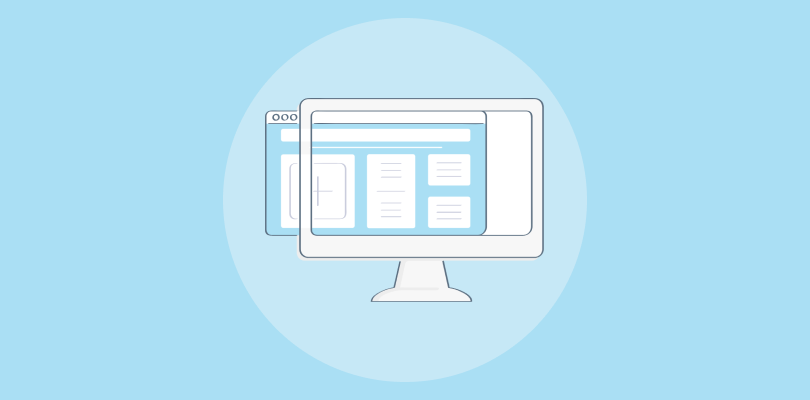
Surveys help you answer a range of whys and hows!
““Why” and “how” are words so important that they cannot be too often used.” – Napoleon Bonaparte.
You might be sending out surveys day in and day out, but unless you are mindful of the purpose of survey, you will not be able to achieve favorable outcomes.
The reason behind a survey is its driving force. This is why it is crucial to define a clear purpose before you begin drafting your survey. In this guide, we answer the various questions pertaining to the purpose of a survey, including ways to conduct them, their length, timing, and outcomes. We also dig deep into the importance of a survey and the usability of survey software.
Let’s get started by understanding what surveys essentially are.
What Is a Survey
A survey is a method of gathering relevant data from the respondents. This information could include their opinion, preferences, feedback, or any other relevant details.
Surveys have a vast array of use cases. From collecting customer feedback to gaining a better understanding of the target market, there are several areas where surveys can be deployed. Surveys are used for a sample target audience to gather insights for a larger population.
You may have come across several types of surveys, ranging from market research surveys that gather important insights about the target consumer to employee engagement surveys that track how satisfied and engaged your staff feels at work.
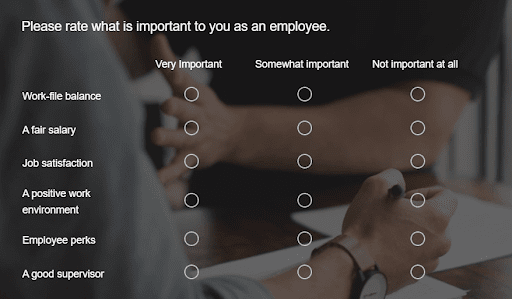
Each survey has a distinct objective. And realizing the true purpose of survey research will help you extract the most valuable data.
Benefits of a Survey- Why are Surveys Useful
Conducting surveys offers numerous benefits to individuals and organizations. Surveys can help to collect feedback, gauge customer satisfaction, identify areas for improvement, gather insights and opinions, and make informed decisions. Surveys also provide a means of obtaining quantitative data and can be conducted quickly and efficiently.
Following are the 6 most significant benefits of conducting a survey:
1. Exploring New Topics
Surveys can help explore new topics by asking questions and gathering feedback on specific areas of interest. This can help identify new opportunities for growth, assess market demand for new products or services, and gain a better understanding of emerging trends and preferences.
2. Understanding Behavior
If you are looking to understand the preferences and behavior of your target audience, surveys can be a powerful tool. Learn more about the likes and dislikes of your audience and use this information to improve future offerings.
3. Gathering Valuable Insights
Surveys help gain actionable insights into various areas such as customer satisfaction, product development, marketing effectiveness, and employee engagement. The insights gained from surveys can help optimize operations and develop new strategies to stay ahead of the competition.
4. Starting a Discussion
Survey helps you start a conversation and make the respondent feel heard. For example, customer satisfaction surveys give voice to your customers and help them raise any concerns they may have, leading to enhanced trust and stronger relationships.
5. Identifying Strengths & Weaknesses
Surveys are a great opportunity for recognizing what you are doing well and what areas can be improved. Seek feedback from the right people and take appropriate action to improve profitability.
6. Improve Performance
Surveys are conducted to facilitate and improve decision-making. They help you make decisions based on actual data rather than assumptions. This leads to an enhancement in overall performance.
Survey purpose also involves the motive, timing, target audience, and length. All of these are explained in more detail in the following sections.
When to Conduct a Survey
The best time to conduct a survey depends on the motive.
For example, if the purpose of survey is to gather feedback about the quality of your customer support, you can send out surveys after service interactions. Or, if you are planning to roll out a new product, you can conduct a product-market fit survey before the deployment.
Also, you have to be careful about the frequency of the surveys. Send them too often and you risk swamping the respondent. Don’t do it at the right moment, and you may miss out on crucial data.
How to Prepare for a Survey
Successful surveys require proper planning. A strategically planned survey will help you improve the quality of responses.
- The first thing to know is what information you are hoping to gather and how it will be used for decision-making.
- Carry out an assessment of your needs and figure out your appropriate target audience.
- Choose the method of survey, survey length, sampling methods, and other related factors.
- Keep the end goal of your survey in mind when crafting the questionnaire.
- Prior to launching the survey, it’s a good idea to test it with a small group of individuals.
You also need to invest in the best survey software to make the most out of your surveys.
The online survey software market is expected to reach $4.86 billion by 2026, with a CAGR of 14.90%. This indicates the availability of a wide array of software options for creating surveys. In order to find the most suitable out of these, you should focus on features such as customizability, pre-built templates, advanced logic, white-labeling, multi-language support, integrations, etc.
FREE. All Features. FOREVER!
Try our Forever FREE account with all premium features!
Whom Will You Survey
The purpose of survey is to gather information from a specific group of individuals, also known as the target audience. As a business owner or marketer, choosing the right group of people to survey is crucial for obtaining accurate and useful data.
For instance, if the purpose of the survey is to understand customer satisfaction with a product, the CSAT survey should be sent to current customers who have recently purchased the product.
Consider the demographics of the target audience. This includes:
- Age
- Gender
- Location
- Income level
- Other relevant factors that may impact their opinions
For instance, if the survey is related to a product aimed at college students, it would be best to survey individuals within the age range currently enrolled in higher education.
Lastly, ensuring that the target audience is representative of the larger population being studied is important. This can be achieved through random sampling techniques or other methods to minimize bias and ensure accuracy.
In conclusion, selecting the appropriate group of people to survey is critical for obtaining meaningful insights and making informed business decisions. Careful consideration of the survey objective, target audience demographics, and sampling methods can help ensure the survey is effective and provides valuable data.
5 Methods of Conducting Surveys
There are several ways to conduct surveys. The most effective out of these would depend on the type of response you are seeking, the target audience’s preference, your business needs, and other such factors.
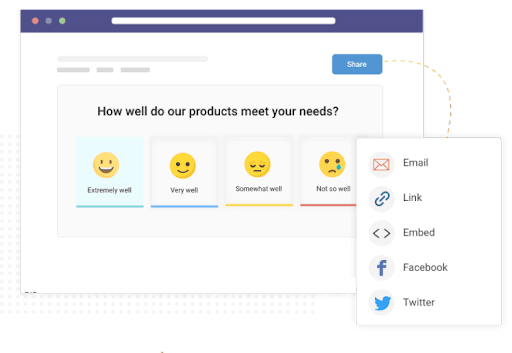
Some of the most common methods of surveys are:
1. Email Surveys
Email surveys are a highly cost-effective and popular method of collecting information online by delivering relevant and engaging emails.
2. In-App Surveys
In-app surveys are displayed while using the application, allowing you to seek necessary information at the right moment.
3. Social Media Questionnaires
Online questionnaires can also be deployed on various social media platforms based on the audience that you are targeting.
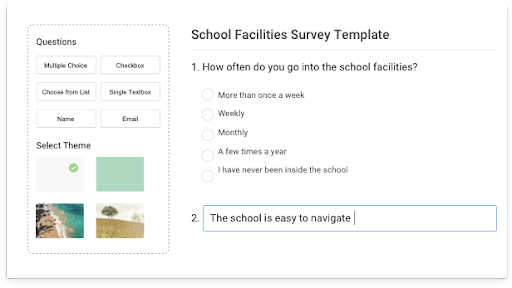
4. Face-to-Face Surveys
Face-to-face surveys involve the physical presence of the interviewer and the survey respondents.
5. Telephone Surveys
Surveys can also be conducted over phone calls. However, these surveys are more time-intensive and require significant manual efforts.
The most efficient method out of these is online surveys, delivered through emails, social media, or deployed on websites and within apps.
The Ideal Length of Surveys
When creating a survey, it’s important to consider the length. This is a critical aspect of the survey design, as it can affect the quality and quantity of responses received. A survey that is too long may result in respondent fatigue, leading to incomplete or inaccurate responses.
As a rule of thumb, surveys should be concise and to the point. The ideal survey length will depend on the objectives of the survey and the complexity of the questions being asked. A survey with simple and straightforward questions can be shorter than a survey with more complex or detailed questions.
To determine the optimal survey length, it’s important to consider the time it will take for respondents to complete the survey. Most people are willing to spend around 5 to 10 minutes completing a survey, while longer surveys may require more time and incentive to complete.
To create an effective survey, it’s important to prioritize the most important questions and avoid asking redundant or unnecessary questions. Consider breaking down the survey into sections, with progress indicators to help respondents understand how much time they need to complete the survey.
In conclusion, the ideal survey length is subjective and depends on the objectives of the survey and the complexity of the questions. It is important to prioritize the most important questions, avoid redundancy, and aim for a survey length that does not exceed respondent tolerance. This will help ensure a higher response rate and better data quality.
Questions to Be Included in the Survey
There are several types of questions that you can include in your surveys. Some examples are listed below.
Multiple choice questions
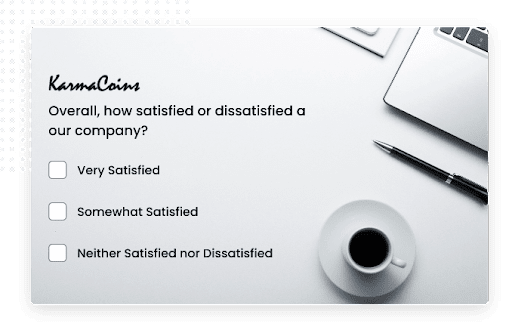
Open-ended questions
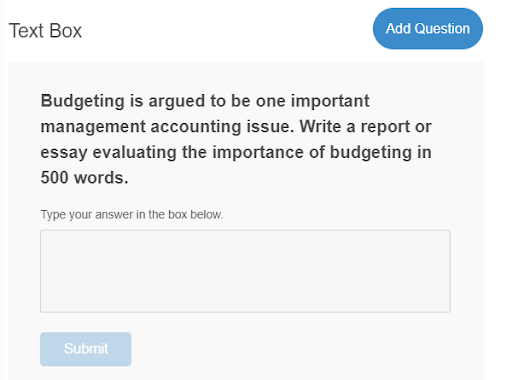
Ranking order questions
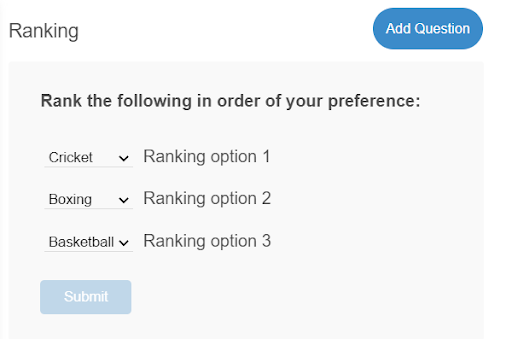
Rating questions
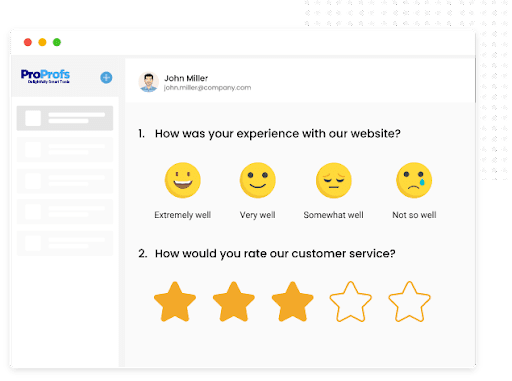
Slider questions
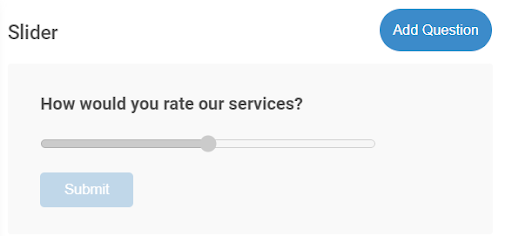
Once you have decided on the type of questions you need, here are some tips for ensuring that your questions are effective and yield a high response rate.
- Avoid using jargon or complicated language.
- Do not use leading or double-barreled questions.
- Provide clear and specific instructions.
- Keep the layout well-organized and clean.
- Be attentive to the order of questions.
- Choose the right question type based on the preference of the target audience and the type of data you are looking to gather.
FREE. All Features. FOREVER!
Try our Forever FREE account with all premium features!
Outcome of Surveys
Defining your survey’s purpose will impact its outcome.
Once you have deployed the survey and collected responses comes the most important step- analyzing the data. The most effective way to do so is with the help of a powerful survey software such as ProProfs Survey Maker. This will help you visualize collected data and gather actionable insights from it.
You can also analyze trends and patterns for survey responses and make use of them to improve your business decisions. Surveys should be viewed as a continuous process, with insights and feedback used to continually refine practices.
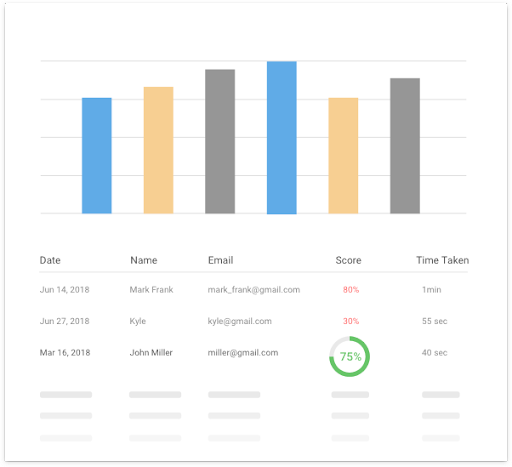
Realize the True Potential of Your Surveys
Surveys can be an invaluable tool for your business if used correctly. And the key to successful surveys is a well-defined purpose.
The purpose of survey is to obtain accurate and useful data that can be used to make informed business decisions. A clear purpose of the survey will help you earn trust and confidence. This is why before you begin crafting any survey, take a moment to understand its purpose.
Careful planning and preparing for a survey will help you ensure that the survey objectives, target audience, and questions are well-defined and appropriate. Also, make sure to invest in a robust survey tool like ProProfs Survey Maker to achieve the most favorable results from your surveys.
 Tips
Tips
We’d love to hear your tips & suggestions on this article!
FREE. All Features. FOREVER!
Try our Forever FREE account with all premium features!



 We'd love your feedback!
We'd love your feedback! Thanks for your feedback!
Thanks for your feedback!







